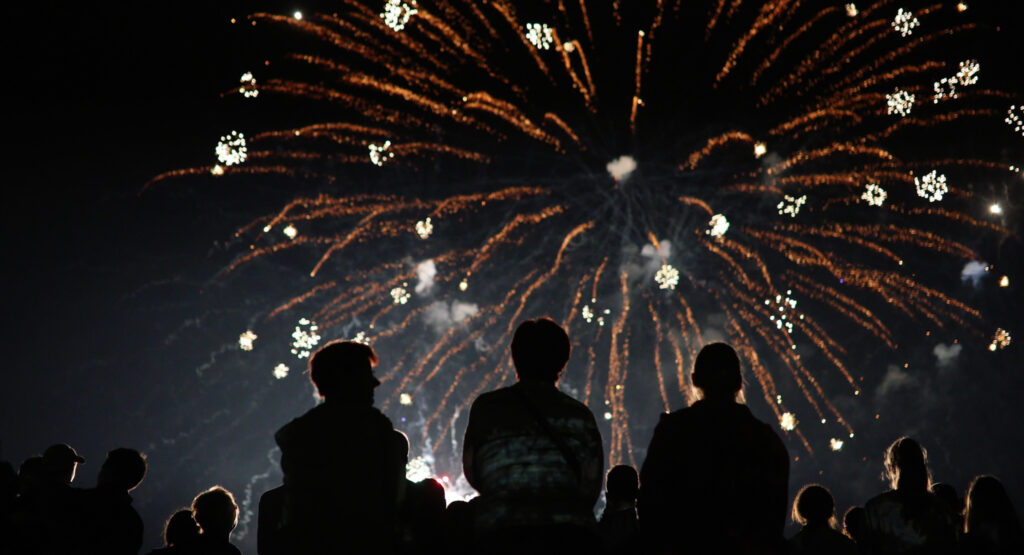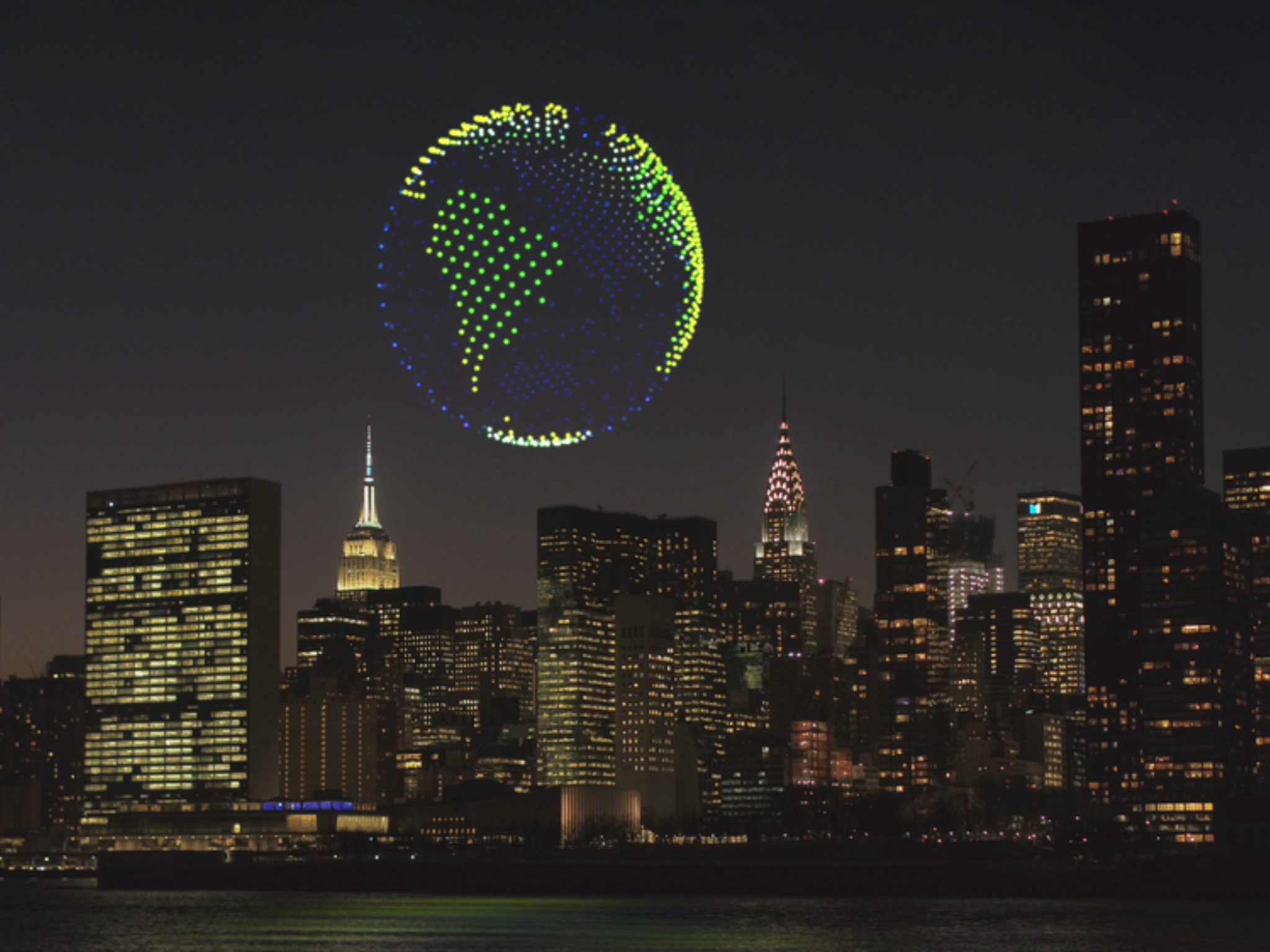4 Mins Read
As we approach the end of 2023, millions around the world are making plans to watch fireworks shows to celebrate the turn of the year. But with more and more people considering their impact on the planet, it’s worth considering a greener alternative: drone shows.
Growing up in India, Diwali was always one of the highlights of the year. For some, it was about families coming together, for others, it was a much-needed holiday with good food – but for most of us, it was the fireworks.
I remember firsthand getting excited for the week leading up to Diwali because my family and I would go firecracker shopping. I also know people who spent fortunes on these things. All on the backdrop of schools and even the government asking us to pledge towards a ‘cracker-free’ Diwali – which never happened because the feeling of lighting a firework and watching it sail into the sky was unmatched.
When I moved out of India, I realised that these things weren’t just big in India. I knew about the Fourth of July, but the craze for New Year’s Eve fireworks took me by surprise. People pay good money to go to a public area with thousands of others to watch a few crackers go up in the sky from miles away, just for a few minutes.
But we know fireworks are bad for the environment. And as every day becomes more and more crucial in the fight against the climate crisis, the leading cause of which is human consumption, we need to consider alternatives like drone shows. Here’s why.
Why fireworks are bad for the environment

When you watch a firecracker explode, apart from the temporary delight of seeing a few colours in the sky, you’re seeing a chemical reaction called combustion, which releases toxic atmospheric pollutants like carbon dioxide, carbon monoxide, nitrogen, sulphur dioxide, and particulate matter – all of which contribute to climate change.
In the US, fireworks emit over 60,000 tonnes of CO2 every year – that’s like driving 12,000 gas-powered cars for a year. They’re also associated with ozone pollution, another potent greenhouse gas and a secondary pollutant. It has been found that atmospheric heat content and surface air temperatures increase during firework displays, while air visibility can decrease by 92%.
Plus, there’s a massive amount of waste created – when crackers burst, it’s not like they disappear into the air. They fall back onto the ground in shattered debris, and they aren’t biodegradable, often being washed out to sea or dumped into fields. The pollutants present here can easily be absorbed by plants and marine animals, hindering their development.
This is how fireworks contribute to microplastic pollution, and spark the risk of wildfires. The US National Fireworks Association reports that firecrackers lead to around 19,500 fires per year in the country – an estimated $105M in property damage. And in London, one study revealed how the New Year’s Eve fireworks show drastically increased microplastic levels in the River Thames.
“Whilst we expected an increase in microplastics’ presence, we did not expect over a 1000% increase from the sample taken on the 30th December 2019 to the one taken six hours after the firework display on the 1st January 2020, roughly 24 hours later,” wrote Ria Devereux, one of the researchers.
And this is all without considering the safety hazards or their impact on animals.
Drone shows are much more climate-friendly than fireworks
In some instances, people have attempted to make “biodegradable” fireworks – despite hard plastics, metal coils and plastic wrappers being littered around the protected waterways and mangrove forests in Florida, which can damage corals, choke birds and fish and entangle manatees, sea turtles and dolphins. Who knew greenwashing was a problem in the firecracker industry too?
Clearly, these are terrible for the environment, and there’s a pressing need for less impactful alternatives. Enter drone shows. With governments in India, China, Germany, Chile and the Netherlands all imposing some kind of restrictions on fireworks, people are turning to novel technologies to get their colourful display fix.
Apart from the fact that these are much more flexible – they can be tailored to display different, specific illustrations depending on the show – drones have a much lower carbon footprint. While there are inevitably some emissions involved in their production, they crucially don’t emit any greenhouse gases and pollutants during light shows, as they’re battery-powered. This means cleaner air and no haze or smoke in the atmosphere.
Drones are also reusable, as they don’t combust and shatter into pieces. This, in turn, leads to notable carbon savings. Additionally, drone shows consume much less energy than fireworks, as they only need power for flight and light displays. Crackers instead require constant ignition and combustion. In fact, drones can be powered by renewable energy sources like wind, water and solar power. The latter is actually being used to create self-charging drones that can continue flight after losing power.
There’s an increasing number of examples of drone shows replacing fireworks. This includes US cities like Salt Lake City, Boulder and Tahoe City, Bordeaux in France, as well as Melbourne in Australia. “We love fireworks, but they blow things up. They’re single-use, they make things catch on fire and they scare animals,” John Hopkins, co-founder of British drone startup Celestial, told Reuters, adding that his company’s goal is to “supersede fireworks”.
“What we’re trying to do is create something, creatively, more interesting, green because we use renewable energy sources and we don’t scare the animals.”



